How To Choose a Kayak Paddle
One of the most intimate pieces of gear you will own as a kayaker is your kayak paddle. Rightfully so, your paddle is the piece of gear your hands will be wrapped around all day and the device propelling your kayak across the water. You want to know you have made the choice which works best for you and one you can rely on for your next outing - whether it be an evening cruise on the local pond, a weekend retreat fishing for bass at the state park lake, or on that mission across a wind-driven bay.
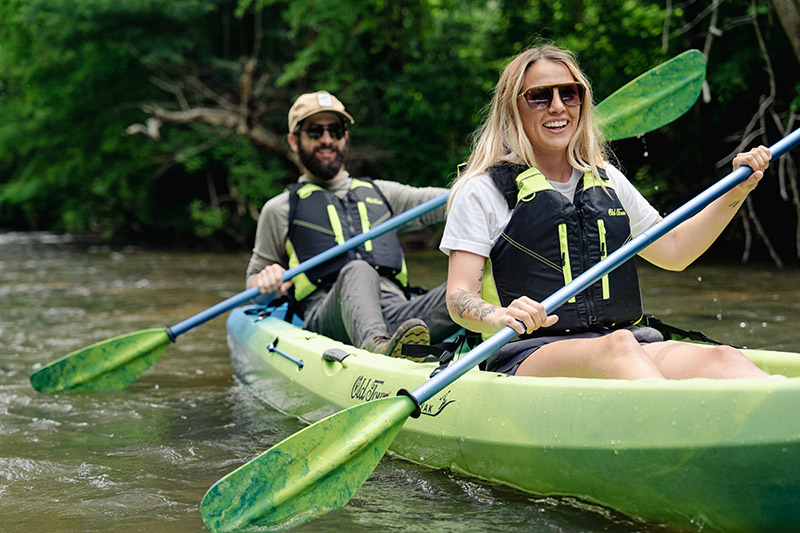
Choosing from the variety of kayak paddles on the market is a task on its own. Kayak paddles come in a variety of lengths, materials, and blade shapes. It helps to have an understanding of what you are looking for. Here are some pointers on choosing the best kayak paddle for your trusty, double-bladed sidekick.
KAYAK OARS OR KAYAK PADDLES?
Paddles and oars are terms often mixed up. People new to the sport may mistakenly refer to kayak paddles as "kayak oars." While the terminology might not seem like a big deal, understanding the difference is important when communicating to others what type of water sport you are participating in and to understand of how each works.
KAYAK PADDLE SIZING
Your kayak paddle length is one of the most important decisions in choosing the best paddle for you. Three factors go into choosing the correct length:
- Your height
- The width of your kayak
- The type of kayaking you will be doing
Just what happens if you choose an improper kayak paddle length?
If your paddle is too short, you will constantly bang your hands on the side of the kayak and have difficulty reaching the water with your paddle.
Kayak paddles that are too long also have disadvantages. Longer paddles are heavier, meaning the excess weight and length produce more strain and increase your risk of injury.
A paddle that is longer than necessary for your kayak also means your strokes may be further from the boat, causing you to zig-zag rather than travel straight -- creating a lot of extra work.
Here is a kayak paddle size chart to find a recommended length based on your height, and boat width:
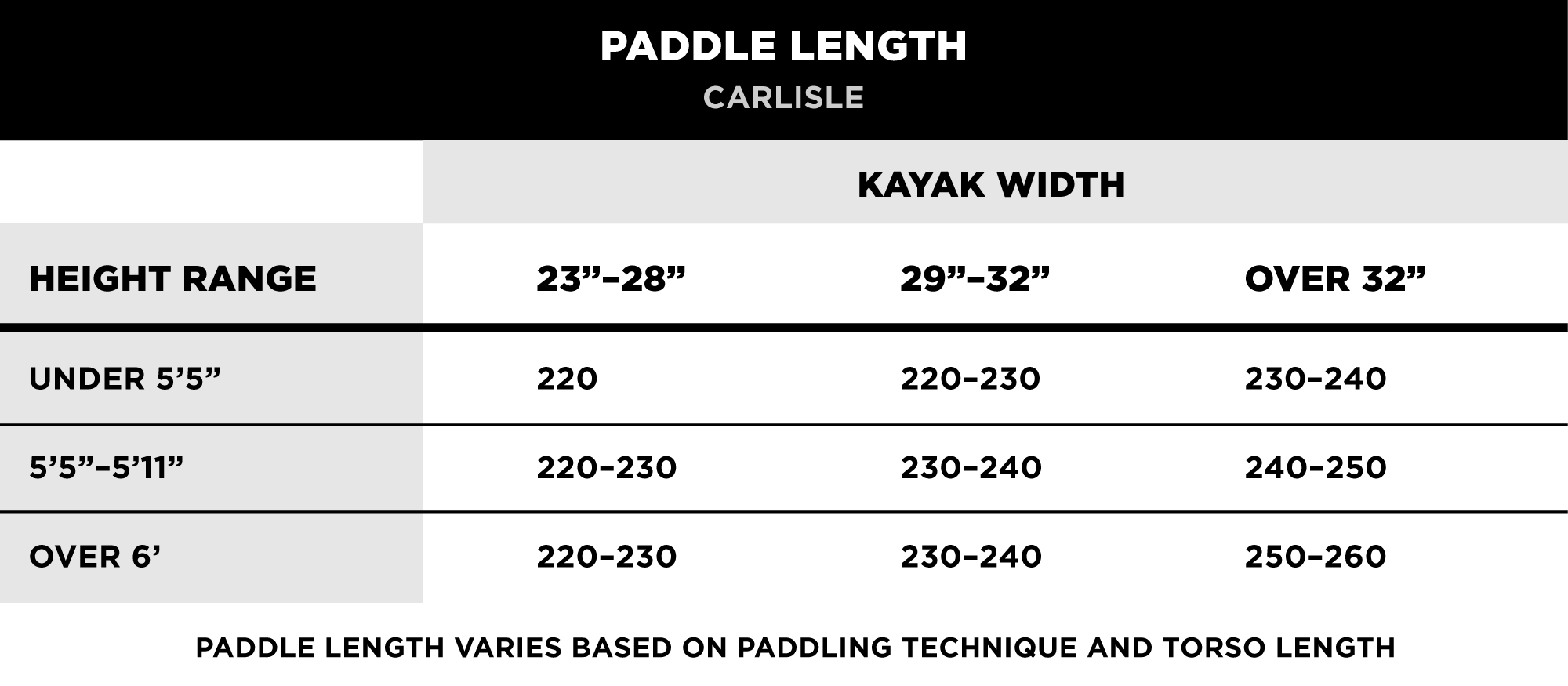
Once you have more paddling experience you will find room for adjustments in your desired length, but the chart provides a good basis to start.
KAYAK PADDLE BLADE MATERIAL
You can find paddle blades made of just about any type of material from plastic to fiberglass to carbon fiber or even wood. There are advantages and disadvantages of each. Some are lightweight and durable while others may be highly flexible and some are heavier. We are going to share a couple of options which are light, durable, and affordable.
Polypropylene blades are made of a high impact plastic. Meaning they can withstand abuse and will bend instead of break when hitting rocks and other obstructions. These paddle blades are also the most affordable. Polypropylene ones like the Carlisle Standard Kayak Paddle are a great choice for beginner paddlers.
Fiberglass reinforced polypropylene paddles are a mix of complementing materials. They retain durability thanks to the polypropylene. While the fiberglass lightens the paddle blade, fiberglass also stiffens the blade, meaning less flex, and more efficiency with each stroke. Fiberglass reinforced polypropylene is a good option for those who will be spending long days on the water or seeking to travel distances faster. Two good options are Carlisle's Magic Mystic or Carlisle's Magic Plus.
Carbon blends are the pinnacle of blade materials. Along with good durability, carbon fibers make these the lightest blades available. They're worth the investment if you love paddling and spend a lot of time on the water, or when a wrist or shoulder problem will benefit from lighter weight.
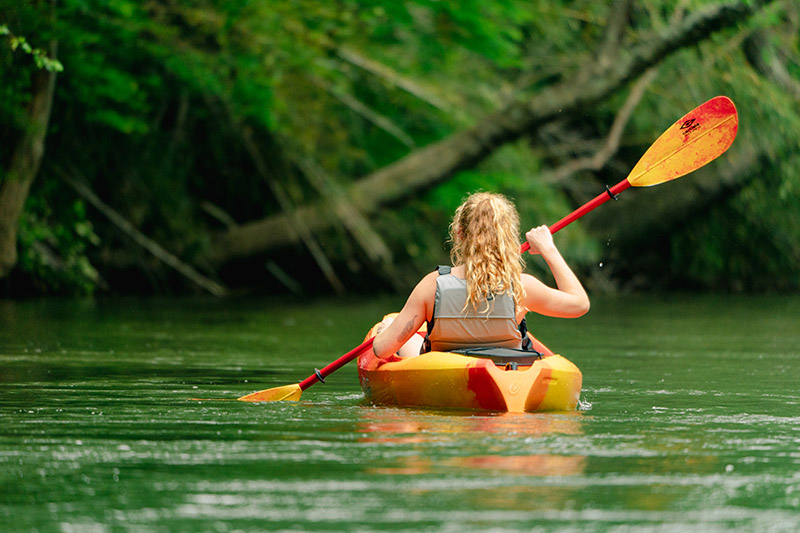
KAYAK PADDLE SHAFT MATERIAL
Just as with paddle blades, paddle shafts are available in a variety of materials. Aluminum and fiberglass are two common options, with carbon used in higher-end models.
The biggest advantage of an aluminum paddle shaft is affordability. Aluminum paddle shafts are generally the lowest priced option. They are also durable. You will see many outfitters and rental businesses provide aluminum shaft paddles to their visitors. This is because of their low cost and ability to handle heavy use. If cost is the most important factor in your paddle purchase, you may want to consider an aluminum shaft.
Fiberglass shafts are light, strong, and provide some flex. They are durable and provide many benefits of a performance paddle shaft but are more affordable than more expensive materials like carbon. If you are seeking a paddle that provides a balance of performance without a big price tag and one that will stay with you as your kayaking abilities grow, a fiberglass shaft is a great option. Our Casco Fiberglass paddle is a great option when budget is limited, your performance isn't.
The primary advantage for a carbon shaft is weight. Together with a carbon blade you benefit from the lightest weight combination available. As noted in the blade section, they are worth the cost if you spend a lot of time on the water, or your physical well-being benefits from a light swing weight. Together with proper paddling technique, a carbon paddle will help minimize soreness and fatigue from a long day of paddling.
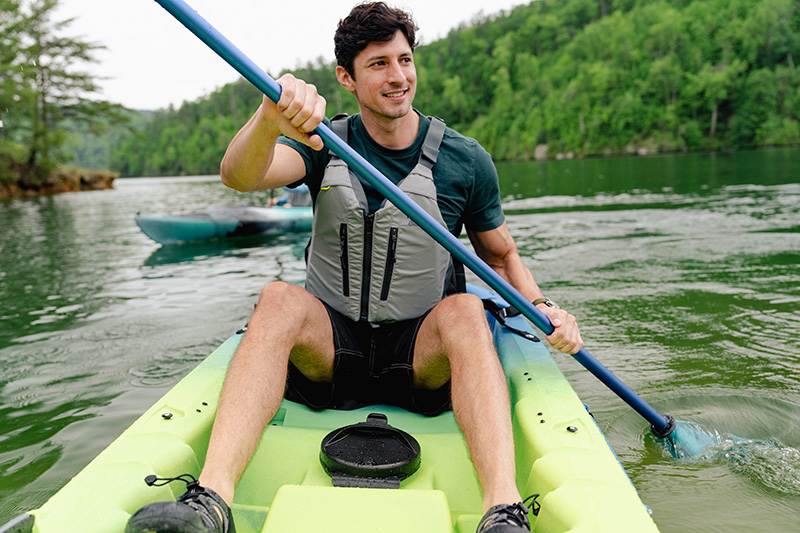
Types of Kayaking Paddles
Recreational Kayak Paddles
Recreational kayaks are wider, more stable kayaks, often used on lakes, ponds, bays, and slow-moving rivers. The width of a recreational kayak means you will need a slightly longer kayak paddle -- somewhere in the range of 220-240 cm [86-94 inches] to reach the water comfortably.
If you are a recreational kayaker, blades made of either polypropylene or fiberglass reinforced polypropylene will work well. Blade shape can either be elongated, symmetrical or asymmetrical. Either an aluminum or fiberglass shaft will work well for a recreational kayaker.
You can scope out some of the recreational paddle options available from Old Town Watercraft here.
Touring Kayak Paddles
Touring kayakers will be in the narrowest kayaks among these three types of kayaks. If you are a touring kayaker, you are usually looking for a kayak paddle to help you cover a bit of distance.
Touring kayaks allow for a choice of either a high or low arm angle in your paddling position. If you prefer a more vertical, high position, stick toward the shorter end of the recommended length for a touring paddle. If you prefer the more relaxed, lower, horizontal paddle position, stay toward the longer end of your recommended paddle length. Generally, touring paddles should be 210-230 cm [82-90 inches].
Fiberglass reinforced polypropylene blades and a fiberglass shaft such as the Carlisle Magic Plus will provide the functional performance you are looking for. The Carlisle Magic Plus also has asymmetrical blades, providing clean, efficient strokes.
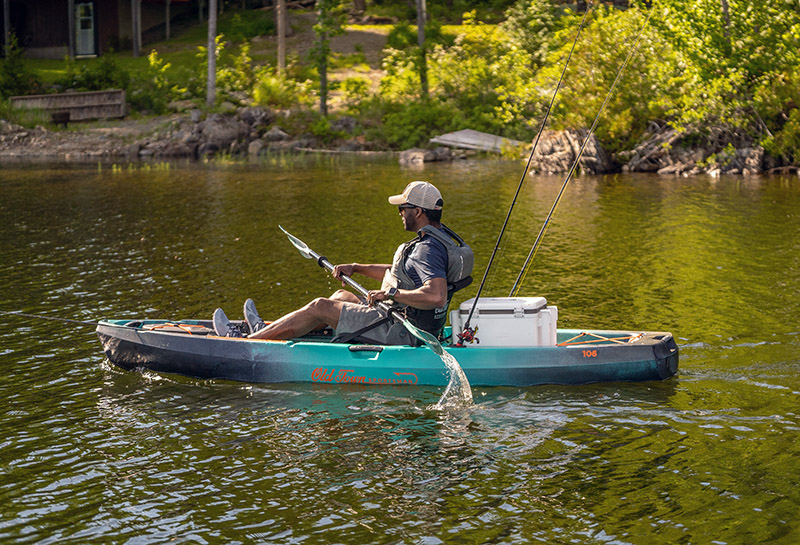
Fishing Kayak Paddles
Fishing kayaks are generally the widest kayaks to provide a solid platform from which to fish. The seats also can be higher off the water to increase visibility and casting ability. This means if you will be kayak fishing, you will probably need the longest recommended kayak paddle length, somewhere in the range of 230-260 cm [90-102 inches].
To chase down trophy fish and lug your tackle around, you will want a strong yet lightweight paddle. A fiberglass shaft with fiberglass-polypropylene blades, such as Carlisle's Magic Angler Paddle would be a good choice.
The Predator Angler has asymmetric shaped blades which produce smooth strokes. It also has a notch cut out as a built-in hook retriever, so when you inevitably snag a branch out of reach, your eight-foot paddle is now useful in more ways than one.
Kayak Paddles for Kids
Kayak paddles for kids are shorter, lighter, and made of durable materials. They're sized down to help smaller hands grip and maneuver on the water. They more often than not have similar attributes as recreational kayak paddles.
We recommend trying the Carlisle Saber Kid's Paddle as it's right-sized, durable, and kid-proof.
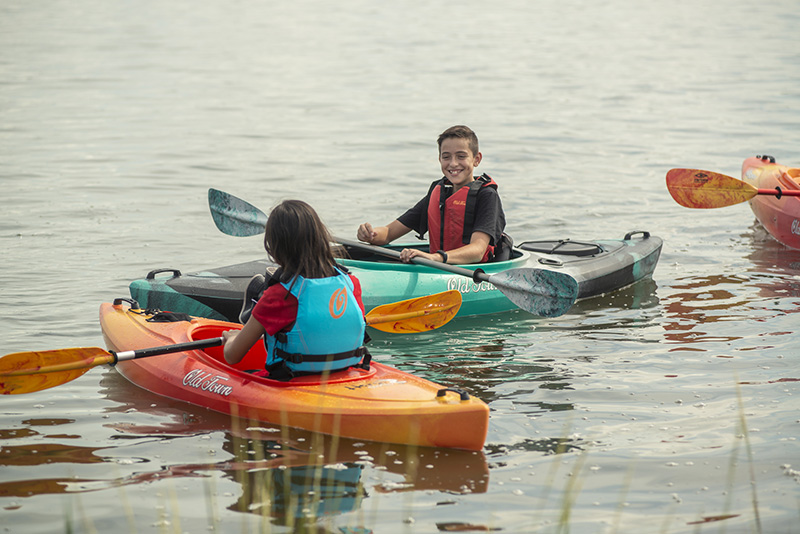
Get on the Water and Paddle!
If you're still unsure which kayak paddle would be best for you, get on the water and try some out. Contact your local paddling shop for available demos or look for testing events for paddles and other gear.
If you have an opportunity to try before you buy, start by holding the paddle over your head and creating a 90 degree (or right angle) at your elbows. This is where you should hold your kayak paddle.
Once you are in the boat, see if you can comfortably reach the water. Also, take note of whether the paddle is able to stay near the kayak or is at an unwieldy distance from the side of your boat.
For more information on proper paddle technique, be sure to check out our article How To Paddle A Kayak.






